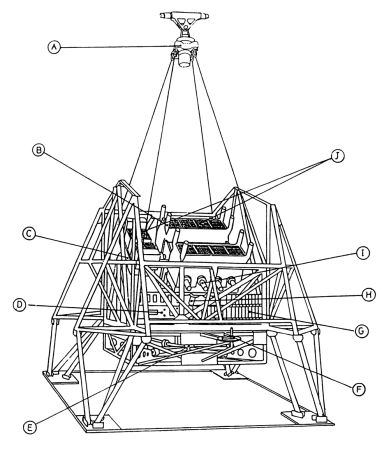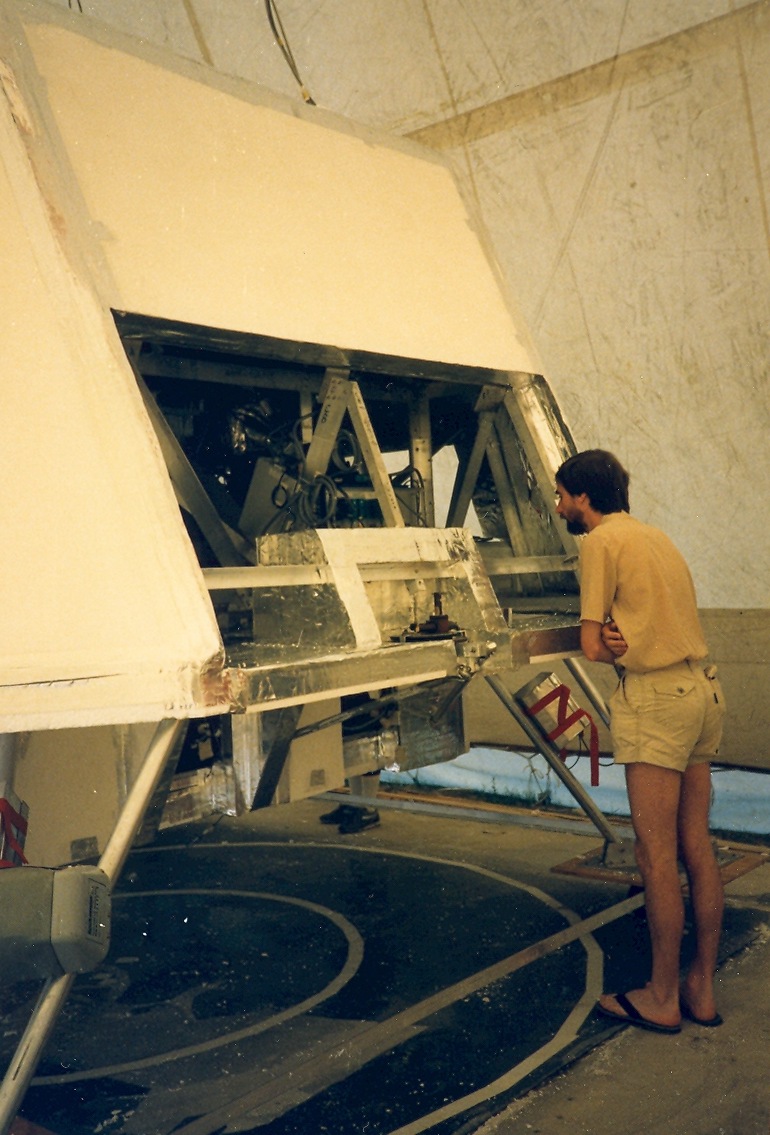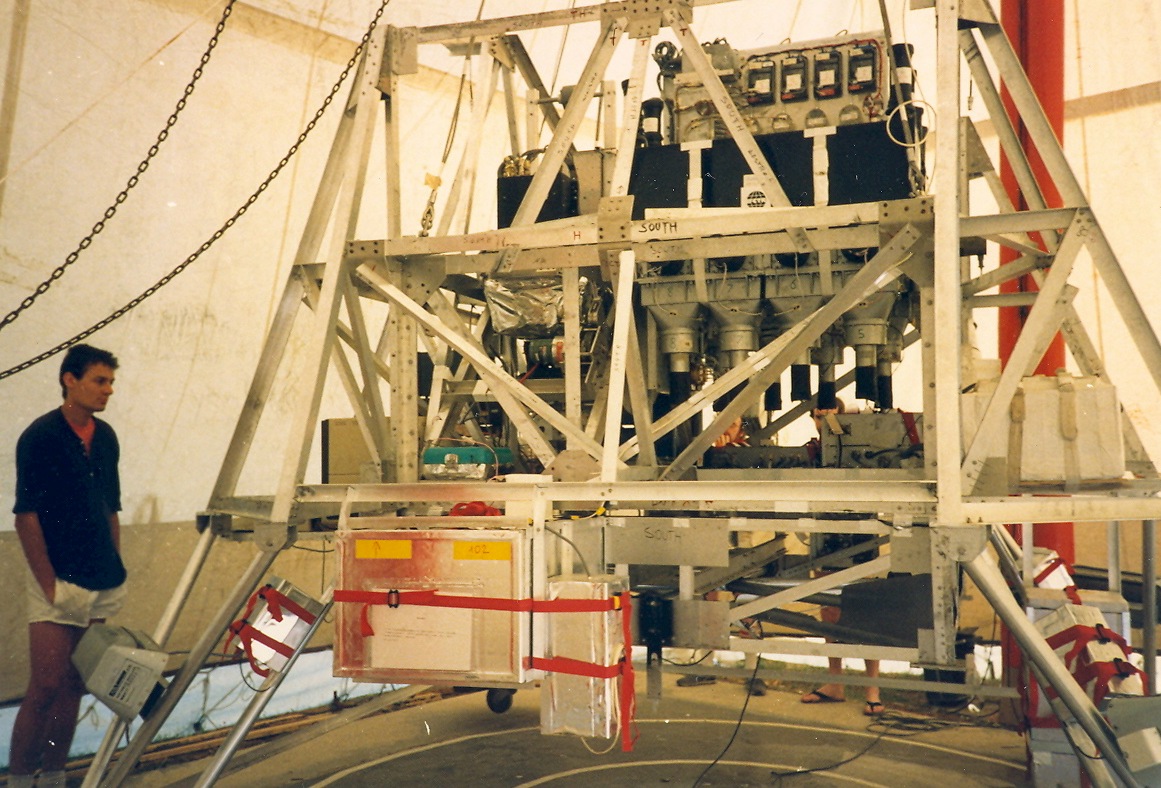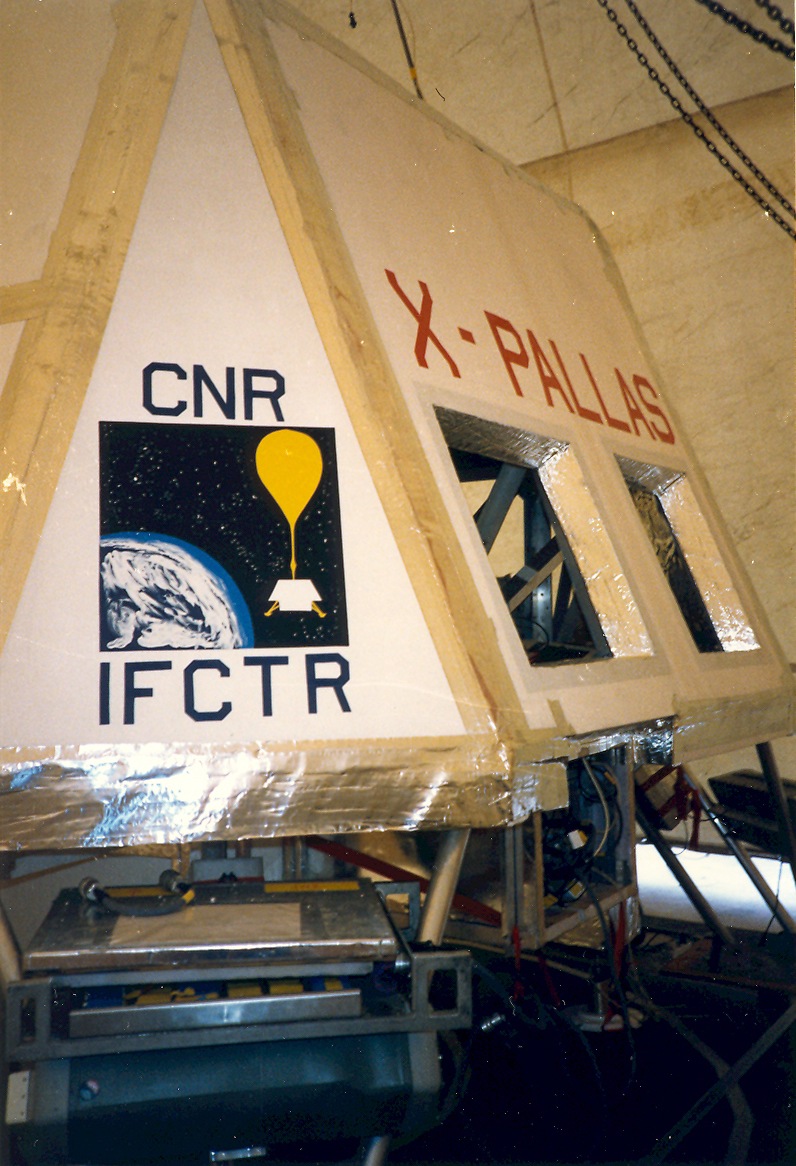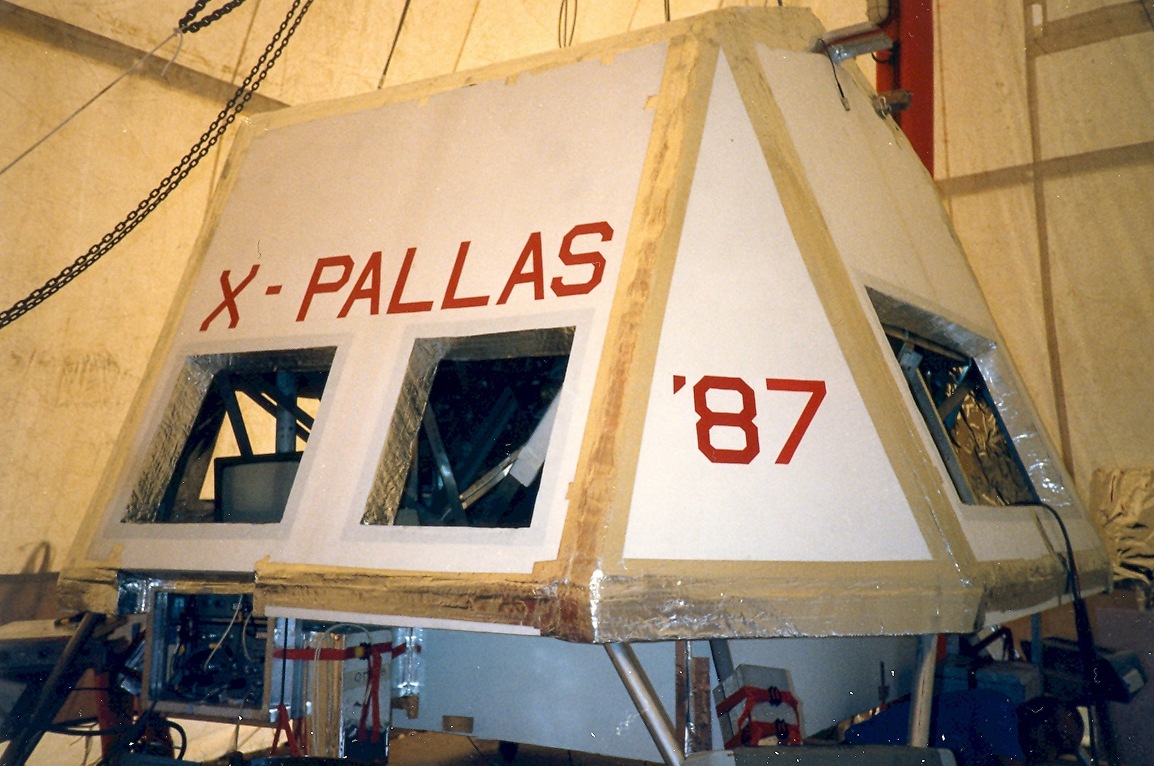Purpose of the flight and payload description
It is a large-area high-sensitivity hard X-ray telescope, operating in the energy range 15-300 keV and is formed of two different arrays: scintillation detectors (NaI, 5.5-mm thick and actively shielded) with a total area of 2700 cm2 and high-pressure xenon gas multiwire proportional counters with a total sensitive area of 900 cm2.
This detector is mounted on a gondola wich includes an elevation drive system and azimuthal control.
The instrument takes their name from the institutions that made it (MIlano FRAscati SOuthampton) and also is referred in certain balloon literature as the PALLAS gondola. Hence the double title.
In this flight were observed the Crab Nebula and a region of the sky containing the Seyfert galaxy NGC 4151.
Details of the balloon flight
Balloon launched on: 7/15/1987 at 7:00 utc
Launch site: Base di Lancio Luigi Broglio, Trapani, Sicily, Italy
Balloon launched by: Centre National d'Etudes Spatiales (CNES)
Balloon manufacturer/size/composition: Zero Pressure Balloon Winzen - 800.000 m3
End of flight (L for landing time, W for last contact, otherwise termination time): 7/16/1987
Balloon flight duration (F: time at float only, otherwise total flight time in d:days / h:hours or m:minutes - ): 20 h 52 m
Landing site: Near Sevilla, Spain
Campaign: ODISSEA 87
Payload weight: 4115 kgs
Overall weight: 4115 kgs
The balloon was launched on July 15, 1987 at 7:45 utc.
After a succesfull release of the balloon assisted by the launch crane, the balloon started traveling from Sicily to Spain crossing the Mediterranean.
Finally after near 21 hours of flight at a height of 38 km, the payload landed near Sevilla,in Spain.
External references
- A large area telescope for balloon-borne hard X-ray astronomy Nuclear Instruments and Methods in Physics Research Section A: Accelerators, Spectrometers, Detectors and Associated Equipment Volume 228, Issue 1, 1984, Pag. 183
- Hard X ray observations of galactic sources 23rd ESLAB Symposium on Two Topics in X Ray Astronomy. Volume 1: X Ray Binaries p 279-281
- Hard x-ray telescope MIFRASO: in-flight performance Proc. SPIE Vol. 1159, p. 126-0, EUV, X-Ray, and Gamma-Ray Instrumentation for Astronomy and Atomic Physics
- Kernel density estimators applied to hard X-ray observations of the Crab Pulsar Carstairs, Ian Ruthven. University of Southampton, Doctoral Thesis. (1992)
- MCG8-11-11 - A powerful source of X- and gamma-rays Astronomy and Astrophysics, vol. 234, no. 1-2, Aug. 1990, p. 106-108.
- Nonthermal X-ray emission from 3C 273 - The core of a knotty problem? Astrophysical Journal, Part 1, vol. 349, Jan. 20, 1990, p. 41-44
- Superlow-state hard X-ray observation of Cygnus X-1 Astrophysical Journal, Part 1, vol. 366, Jan. 10, 1991, p. 544-548
2065If you consider this website interesting or useful, you can help me to keep it up and running with a small donation to cover the operational costs. Just the equivalent of the price of a cup of coffee helps a lot.

